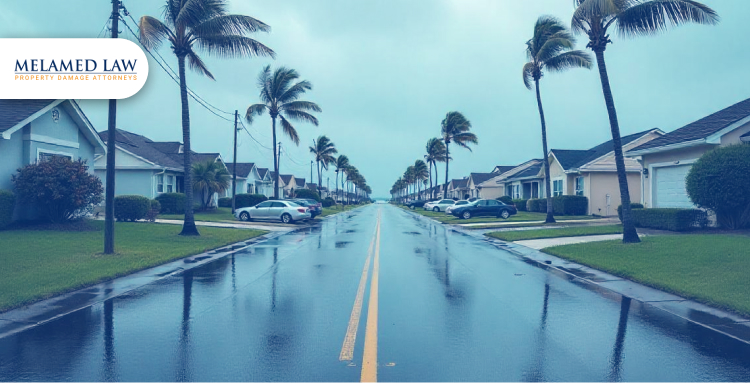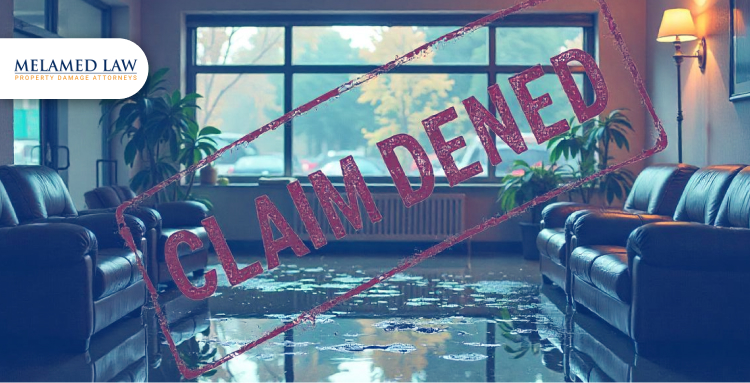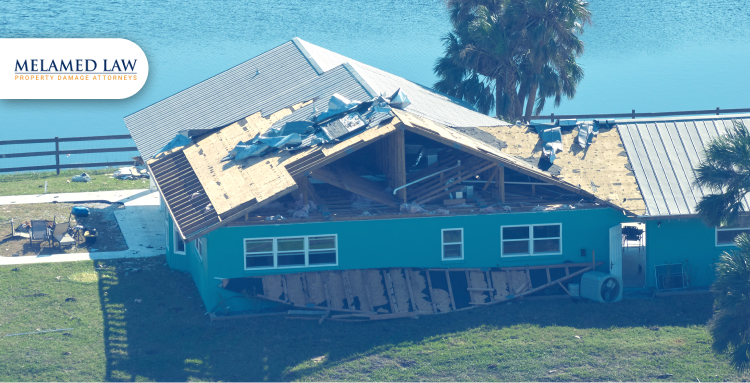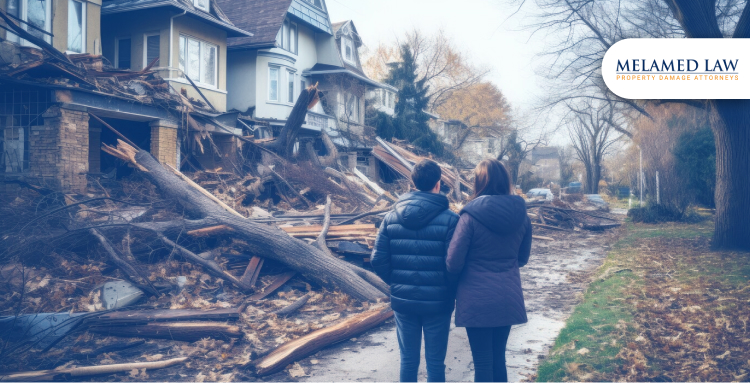
What to Do If Your Water Damage Insurance Claim is Underpaid
When the unexpected happens, we help individuals and businesses collect the money they deserve for their insurance claims.
Melamed Blogs
April 15, 2025
What to Do If Your Water Damage Insurance Claim is Underpaid

Water has a way of reminding us of its power. It can nurture life, carve through mountains, or—at its most unexpected—sneak into our homes and disrupt everything we’ve built. When you’ve faced the chaos of water damage, you expect your insurance to bring some sense of relief, a lifeline to rebuild and recover. But what happens when the lifeline isn’t enough?
Imagine standing in your living room, surrounded by damp walls and ruined belongings, only to find that the help you counted on has fallen short. It’s a frustrating, lonely place to be. However, you don’t have to accept an underpaid claim as the end of the story. Just as water carves its way through stone, persistence can carve a path to fairness.
Let us walk you through the steps to take when your water damage insurance claim is underpaid, so you can reclaim what you’re owed.
1) Review Your Water Damage Insurance Policy
Before taking any action, it’s crucial to thoroughly review your insurance policy. This document details the terms of your coverage, including what’s covered and what’s excluded. Here are the key sections to focus on:
Coverage Limits
It’s important to know the maximum amount your policy will pay for water damage. Most policies have specific limits based on the type of damage, so check to see if your claim falls within these limits.
Exclusions
Understand what is not covered. Some policies exclude damage caused by certain types of water events, such as flooding or sewage backup. Knowing these exclusions can help you decide whether you need additional coverage, such as flood insurance.
Policyholder Responsibilities
Make sure you’ve met all the requirements of your policy. For example, many policies require timely reporting of damage or immediate actions to mitigate further losses.
Deadlines
Note any time limits for filing claims or disputing settlement amounts. Insurance policies often have strict timelines, and missing a deadline could jeopardize your chances of receiving your desired compensation.
Misunderstanding these critical aspects can cost you significantly down the road, especially if your insurance company tries to underpay or deny your claim. You can visit the U.S. Department of Housing and Urban Development and get helpful information on understanding homeowner insurance policies
2) Document Water Damage Thoroughly

Proper documentation is one of the most important steps in ensuring your claim is handled accurately. Here's how you can build strong documentation:
Photographs and Videos
Capture time-stamped photos and videos of every area affected by water damage. These should range from minor water stains to severe structural damage. Make sure you capture close-ups and wide-angle shots to show the full extent of the damage.
Receipts for Temporary Repairs
If you’ve made any emergency repairs, such as water extraction or protecting your property, save the receipts. These expenses can demonstrate your efforts to minimize further damage, which is something the insurance company may require as part of the claims process.
Professional Assessments
Get estimates from contractors or water damage experts for the cost of repairs. Their opinions often provide a more accurate and unbiased view of the actual repair costs compared to an insurance company's initial assessment.
This documentation acts as proof in case you need to dispute any underpayment later on. If needed, you can visit external resources like the Federal Emergency Management Agency (FEMA) for guidelines on how to document water damage.
3) Prevent Further Water Damage to Your Property
Under Florida law and in most insurance policies, you are obligated to take reasonable steps to prevent further damage after water intrusion. This is essential in maintaining the validity of your claim and avoiding additional costs that the insurance company may not cover.
Here’s how to effectively mitigate further damage:
Act Quickly
The longer water remains in contact with your property, the greater the potential for mold growth or structural issues. Dry out affected areas, cover leaks, and remove standing water as soon as possible.
Keep Detailed Records
Document all actions taken to prevent further damage. This includes purchasing supplies like tarps and fans or hiring professionals for water extraction. Be sure to keep receipts and logs, as they serve as evidence of your compliance with policyholder responsibilities.
Taking immediate action can improve your chances of receiving the full payout. Visit the U.S. Department of Energy for helpful information on preventing further damage to homes affected by water.
4) How Melamed Law Protects Your Water Damage Claim

We know how disheartening it can be when your water damage insurance claim is underpaid or denied. It’s a reality that many face, yet few truly understand the weight of. The sense of injustice, the frustration of fighting against a system that should be there to support you—it’s something no one should have to endure alone. And Here’s how we can help:
In-Depth Policy Expertise
Insurance policies are often written in a language meant to confuse. It’s not by accident. We’re here to cut through that fog. With our understanding of Florida insurance law, we’ll ensure you know exactly what’s covered and, more importantly, what the insurance company is obligated to pay. We’ll spot any unfair clauses that could limit your claim and guide you toward what’s rightfully yours.
Comprehensive Claim Support
We take the time to comb through every piece of evidence, every document, and every response from your insurance company. If we find any gaps, if they’ve undervalued your claim or missed critical details, we’ll fight for you.
Negotiation and Litigation
In the face of indifference, we choose to act. Whether through negotiation or legal action, we’ll ensure your claim is fairly handled. Our focus is on your future, on the next steps, so you can rebuild while we navigate the complexities of the system.
Contact Melamed Law to ensure your story is heard and your rights are protected. It’s not a matter of luck—it’s a matter of justice.
Find additional information in these related posts
5) File a Complaint Against Your Insurance Company
In Florida, the Florida Department of Financial Services (DFS) oversees insurance companies and can investigate claims of bad faith or improper handling of claims. Filing a complaint can put pressure on your insurance company to reassess their decision.
Be Specific
Provide a clear and detailed explanation of your underpayment issue, including the claim amount, the insurance company’s response, and any supporting documents.
Highlight Relevant Facts
Show any efforts you’ve made to resolve the issue directly with the insurance company. This could include emails, letters, or records of phone calls. By demonstrating your willingness to work with the insurance company, you strengthen your complaint. While filing a complaint won’t automatically resolve your claim, it creates an official record of your grievance and can push the insurance company to reassess its actions. If necessary, it also lays the groundwork for further legal action.
Recent Cases















